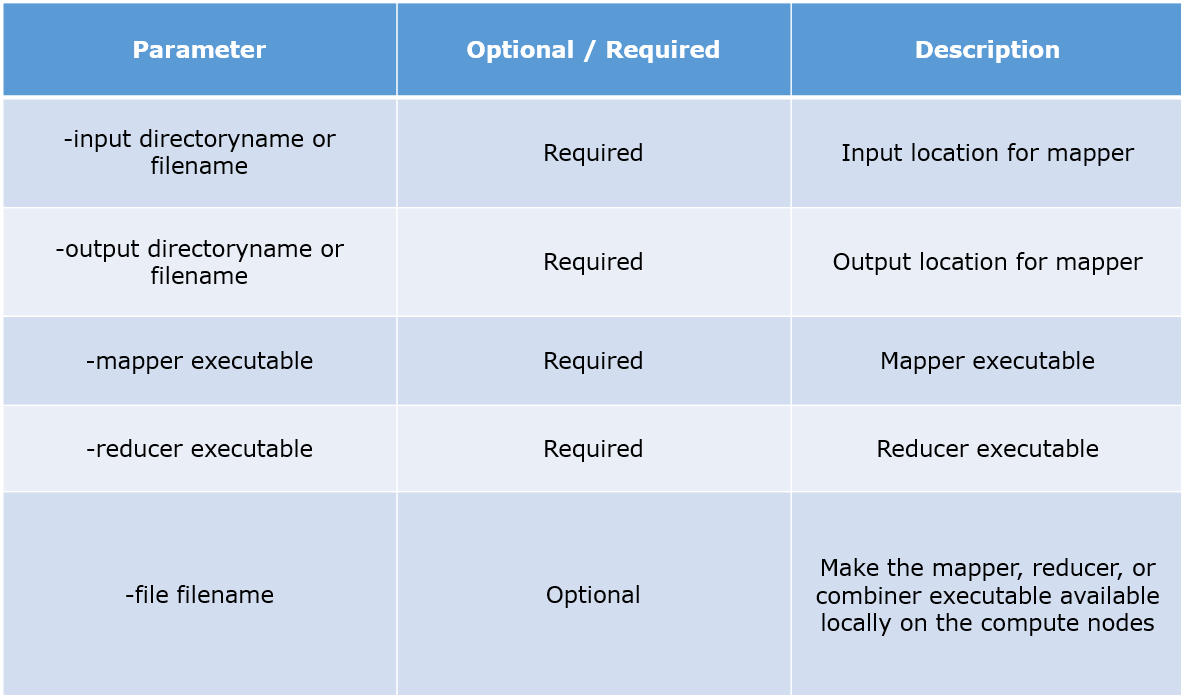
Writing An Hadoop Mapreduce Program In Perler

In this tutorial I will describe how to write a simple program for in the programming language. • • • • • • • • • • • • • • • Motivation Even though the Hadoop framework is written in Java, programs for Hadoop need not to be coded in Java but can also be developed in other languages like Python or C++ (the latter since version 0.14.1). However, and the most prominent on the Hadoop website could make you think that you must translate your Python code using into a Java jar file.
Obviously, this is not very convenient and can even be problematic if you depend on Python features not provided by Jython. Another issue of the Jython approach is the overhead of writing your Python program in such a way that it can interact with Hadoop – just have a look at the example in $HADOOP_HOME/src/examples/python/WordCount.py and you see what I mean. That said, the ground is now prepared for the purpose of this tutorial: writing a Hadoop MapReduce program in a more Pythonic way, i.e. In a way you should be familiar with. What we want to do We will write a simple program (see also the ) for Hadoop in Python but without using Jython to translate our code to Java jar files. Our program will mimick the, i.e. It reads text files and counts how often words occur.
The input is text files and the output is text files, each line of which contains a word and the count of how often it occured, separated by a tab. Note: You can also use programming languages other than Python such as Perl or Ruby with the 'technique' described in this tutorial. Prerequisites You should have an Hadoop cluster up and running because we will get our hands dirty. If you don’t have a cluster yet, my following tutorials might help you to build one. The tutorials are tailored to Ubuntu Linux but the information does also apply to other Linux/Unix variants.
Download File Prince Royce FIVE (Deluxe Edition) (Album) (2017) zip. -Roshan-Prince.jpg)
• – How to set up a pseudo-distributed, single-node Hadoop cluster backed by the Hadoop Distributed File System (HDFS) • – How to set up a distributed, multi-node Hadoop cluster backed by the Hadoop Distributed File System (HDFS) Python MapReduce Code The “trick” behind the following Python code is that we will use the (see also the corresponding ) for helping us passing data between our Map and Reduce code via STDIN (standard input) and STDOUT (standard output). We will simply use Python’s sys.stdin to read input data and print our own output to sys.stdout. That’s all we need to do because Hadoop Streaming will take care of everything else! Map step: mapper.py Save the following code in the file /home/hduser/mapper.py. It will read data from STDIN, split it into words and output a list of lines mapping words to their (intermediate) counts to STDOUT.
The Map script will not compute an (intermediate) sum of a word’s occurrences though. Instead, it will output 1 tuples immediately – even though a specific word might occur multiple times in the input. In our case we let the subsequent Reduce step do the final sum count. Of course, you can change this behavior in your own scripts as you please, but we will keep it like that in this tutorial because of didactic reasons.:-) Make sure the file has execution permission ( chmod +x /home/hduser/mapper.py should do the trick) or you will run into problems. #!/usr/bin/env python ''mapper.py'' import sys # input comes from STDIN (standard input) for line in sys.
OTC Tools 4847A - OTC Tools Camshaft Bearing Installation and Removal Tools Compare CAM TOOLS, TWIN CAM INNER CAM BEARING REMOVER/INSTALLER KIT. Cam bearing installer instructions for 941 2017.
Stdin: # remove leading and trailing whitespace line = line. Strip () # split the line into words words = line. Split () # increase counters for word in words: # write the results to STDOUT (standard output); # what we output here will be the input for the # Reduce step, i.e. The input for reducer.py # # tab-delimited; the trivial word count is 1 print '% s t% s'% ( word, 1 ) Reduce step: reducer.py Save the following code in the file /home/hduser/reducer.py.